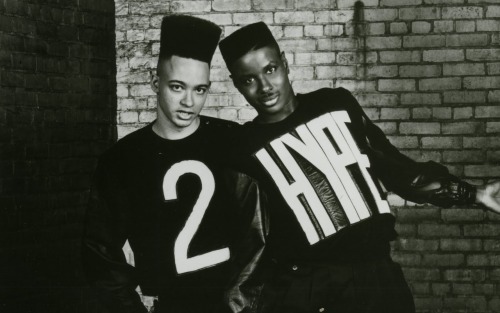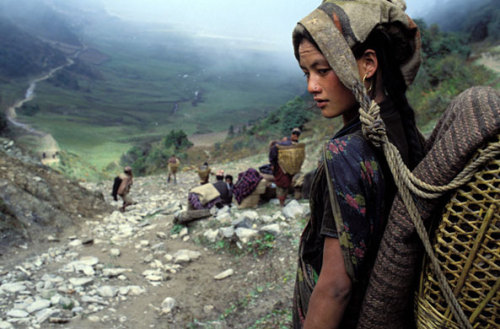
In the midst of urban development and growth, the people who are often most affected by the result of elite decision making are the marginalized groups in society. In the case of the United States in the 1980s, the marginalized group consisted of racialized visible minorities such as blacks and Latinos. Throughout history the way marginalized groups have dealt with the effect in social changes were different. For the purposes of this post, the focus of dealing with urban development will be concentrated on the creation of Hip Hop as a response to this marginalization. It is important to consider the experiences of the racialized youth when relating it to hip hop because it shows the complex interplay of race and racism in contemporary urban cities. What's my point? Well I think that the creation of Hip Hop culture was the response to the effects of the politics of race and racism during the growth of post-industrial cities. I think so for 3 main reasons. First through the exploration of the socioeconomic context in which gave birth to Hip hop, Second through the alienation of the citizenship of racialized groups in ghettos from gentrification, third through contemporary identities in Hip Hop culture.
Dub Kweli by Max Tannone
I read a book a while back called: Black Noise by Tricia Rose. In this book she describes the context of the emergence of Hip Hop as sharing some similarities to the beginning of many other musical genres. As being an extension of the African Diaspora of expressing themselves in the midst of oppression, as it was for the blues. The urban context that is critical to the development of hip hop is described by Rose in the chapter: “All aboard the Night Train” as the result of global forces shaping the urban metropolis (Rose, p. 27). These global forces started in the 1970s when social services were losing funding and industrial factories were being replaced by information services, “leaving working-class residents with limited affordable housing, a shrinking job market and diminishing social services” (Rose p.27). Furthermore, Blacks and Hispanics found themselves dis-proportionally over represented in the category of low income in comparison to whites.
A systematic shift in occupation from blue collared manufacturing jobs to information and corporate jobs in addition to the shrinking federal funds and affordable housing constructed the setting of low income in racialized communities (Rose, p.30). As a result of this shift during the growth of the city was the decrease in funding in several schools. When schools got less funding, the areas that suffered as a result were the arts. This meant that areas like music, physical education, visual art were eliminated from school curriculums. Racism can be seen in this event in the negative evaluation of the racialized to assess the fact that it is unnecessary to provide help to these communities because of their status of “visible minorities”. As a result, many racialized youths found themselves unoccupied and unable to express themselves in the midst of their oppression. The Arts offered a way for people to express themselves and offer an entertaining outlet to escape from the sometimes harsh realities of living in the ghetto.
“Hip hop culture emerged as a source for youth of alternative identity formation and social status in a community whose older local support institutions had been all but demolished along with large sectors of its built environment” (Rose, p.34). The youths that were drawn to arts found themselves structurally limited because of their lack of resources. Hip hop offered them a platform where their voices could be heard, and frustrations could be channelled through one of the four elements: emceeing (rap), Graffiti, breakdancing, and turntablism (DJ). The context that paved the way for the creation of hip hop was the gentrification of neighbourhoods. Hip hop culture offered an avenue that was unique to these neighbourhoods that gave the members of the movement a sense of self and a sense of community and a platform to facilitate self-expression. The exploration of the context in which hip hop was birthed is an evident play of gentrification or systemic exclusion of the racialized in post industrialization of cities in America. More specific to the politics at play in the gentrification of neighbourhoods was the universal sense of social exclusion of the racialized groups.

In a book called: Daily Struggles, Galabuzi coins the term “social exclusion” to refer to the experience of racialized groups in society.
“Social exclusion is a form of alienation and denial of full citizenship experienced by particular groups of individuals and communities; among its characteristics are high levels of poverty, uneven access to employment and employment income, segregated neighbourhood selection leading to racialized enclaves, disproportionate contact with the criminal justice system, and low health status”. (Galabuzi p.81).
What is meant by “social exclusion” as it relates to hip hop and politics of race and racism is that the value of the racialized citizen becomes devalued because it is treated unequally in comparison to the non-racialized citizen. Furthermore, this economic segregation from the upper segments of the labour market led to a social segregation thus forming the “erasable ghettos”. As a result, from the emergence of Hip hop, the consumption of commodities became central to what Hip hop was because it offered the alienated racialized citizen a way to reclaim themselves through fashions, street names and crews. The creation of urban culture has allowed hip hop to transcend the colour line, and invite a variety of races to partake into its culture.

Just as the city was growing, the possibility of using commodities to get out of economic turmoil became evident as well. The focus of the hip hop movement to the use of commodities is one attribute that differentiates it from other forms of African American music. The consumption of commodities became a central point in claiming an identity in the racialized communities where hip hop culture was the youth’s popular culture and is now recognized as urban culture. Furthermore this lead to the creation of “urban culture”: a marketable subculture that combines the “ghetto lifestyle” with a “bourgeois” sense of consumerism (Chang). Chang suggests that urban culture sought to look beyond it because “people identified with rap” (Chang p.53)
02 Maybe She'll Dream Of Me www.pinboardblog.com by PinBoardBlog.com

Besides the artistic aspect of Hip hop, as an outlet for self expression, one may suggest that it does nothing to fix the problems in the context that created hip hop in the first place. In John McWhorter’s book: All about the beat: why hip hop can’t save America, he argues that hip hop besides its political context cannot be used to better the conditions of the racialized or “black America” (McWhorter, p.8). The creation of hip hop, created a platform that was conducive to the voicing of the expressions of the racialized people. Consequently however, it offered no political meaning to advance or better their situation. The ghetto that created hip hop is still here today. McWhorter suggests that if there is to be a revolution in hip hop, it will be driven by the music but will not come out of the music. McWhorter argues that the idea that hip hop can bring about a revolution is based on the same rhetoric that the black panthers had during the civil rights movement (McWhorter, p. 162).
According to McWhorter there is no political difference between gangster rap and “conscious” hip hop, because neither offer a political tool to change the actual context of the ghettos and “slums”. For example in Tupac’s “Brenda’s Got a Baby” the issue of a twelve year old pregnant female and her family’s plight to mean that the welfare check will be bigger. Although it attacks the psychological reasoning of this young girl, it doesn’t attack the issue of “welfare policies used to disempower people by paying them to have kids while never requiring them to seek job training or work” (McWhorter, p. 25). But regardless of the political utility rap lyrics have the ability to raise consciousness in order to “Fight the power” of racial and economic oppression.

What I'm trying to convey through this post is that the socioeconomic context that led to the creation of hip hop is fundamental to the understanding of the effects racism and politics have on racialized groups in post-industrial cities. By focusing on racialized groups, one can have a better understanding of the reality of post-industrialization in cities in America. The politics of race and racism is also shown in the social exclusion of blacks and Latinos and other "visible minorities" (a term put in quotation because I find it to be problematic) through the alienation of their citizenship. As a response to this alienation, the creation of hip hop brought forth a platform to claim themselves. Critically however, hip hop raises the issue that should be eyed critically but cannot be used as a political tool to fix problems of its context because it’s just music. The most it can do, or has done is bringing awareness to the listener who chooses to give hip hop a careful listen of the lyrics beyond the beat. Had it not been for the legacies of race and racism in America, hip hop may not have ripened. So much so that its purpose is of “dissing” and lowering their opponent in order to empower themselves is an idea that is at its core (Due to the constraint of this post, cannot be further elaborated on). Hip hop culture has enunciated the need to “fight the power” but does not provide the tools necessary to bring about this change.
....

...
I guess, when I really think about it, that's why I chose to study political science. I came into this, thinking that if I know how the system works, and how the world is structured, I could maybe do something about the injustice,... maybe do something about the poverty. ... But of course, the more I learn the more I overwhelmed I felt about making any sort of difference. ... And to be honest, I don't really know where to start change. But I can't just do nothing. so I simply Try my best to Be that change. To pay Hip Hop a careful listen... To pay people a careful listen. ...I mean I've been blessed to have a voice. To have working hands and legs. So I can't just do NOTHING........... so,
...
let's just say... I'm working on my next step.

[sidebar: I do realize this post is my longest. But if you couldn't tell already, I wrote this for a class. lol]
"Hip hop offered them a platform where their voices could be heard, and frustrations could be channelled through one of the four elements: emceeing (rap), Graffiti, breakdancing, and turntablism (DJ). The context that paved the way for the creation of hip hop was the gentrification of neighbourhoods. Hip hop culture offered an avenue that was unique to these neighbourhoods that gave the members of the movement a sense of self and a sense of community and a platform to facilitate self-expression."
ReplyDeleteummm...tres. bien. dit! Tu t'exprimes bien! I'm guessing that was at least an A right?
keeeeeet
Whew. Just finished it now. Next time? Split this over like two posts please! Remember the days when revolution was hidden in the lines of negro spirituals? Directions to freedom mapped with lyrics? I think that is possible with hip hop, because music has this incredibly unifying power. Especially now when traditional news sources are disappearing, and social media is becoming more mainstream. There's room for revolutionary voices, and action within music. What does it take to get back to that? *Shrug* I just read blogs...
ReplyDeleteIfy